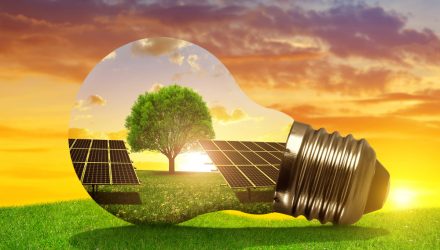NextEra Energy (NEE) announced plans to double its own renewable energy portfolio in the wake of the Inflation Reduction Act. As part of the plan, the energy company could develop up to 42 GW of commissioned renewable energy and storage projects for non-utility customers by 2026.
“By incorporating the IRA benefits, we expect the post-2025 new solar capacity in this year’s plan will more than double what it was last year,” said John Ketchum, chairman, president and CEO of NextEra Energy during the company’s Wednesday earnings call. “We believe low-cost solar will also provide a valuable hedge for our customers against rising natural gas prices in the future.”
Before the IRA, NextEra Energy qualified for two federal incentives: wind production tax credits and solar investment tax credits. There was an uncertainty surrounding the incentives, which posed a challenge for “planning the business with those federal incentives expected to phase down and expire in a few months or years.”
Now, with the passage of the IRA into law, Ketchum said that NextEra Energy will benefit from federal incentives that “support a broader range of renewable technologies” that “are in place for a much longer period of time.”
He added that the cost and efficiency of renewable energy has seen significant improvement over the past 20 years, while natural gas prices have risen over the past year.
NextEra Energy is the second largest holding in the Neuberger Berman Carbon Transition & Infrastructure ETF (NYSE Arca: NBCT) as of Feb. 1, making up nearly 4% of the fund’s holdings. The actively managed NBCT seeks to invest in companies that are focused on or are transitioning their businesses to focus on one or more of the following themes:
- Low-carbon resources: issuers focused on producing renewable energy, such as solar, wind, geothermal, and green hydrogen, and the related storage and transport of these energies.
- Electrification: issuers that help enable the replacement of technologies that use higher carbon-emitting fuels with those that use low-carbon resources as a source of energy, including those that support smart grid and electric vehicle charging solutions, as well as electricity transmission and distribution that helps expand usage of low-carbon solutions.
- Carbon reduction solutions: issuers that directly facilitate the carbon reduction goals of infrastructure owners, including innovative raw materials, industrial gases, engineering and construction service providers, environmental services providers, and environmental technology providers.
For more news, information, and analysis, visit the Megatrends Channel.

